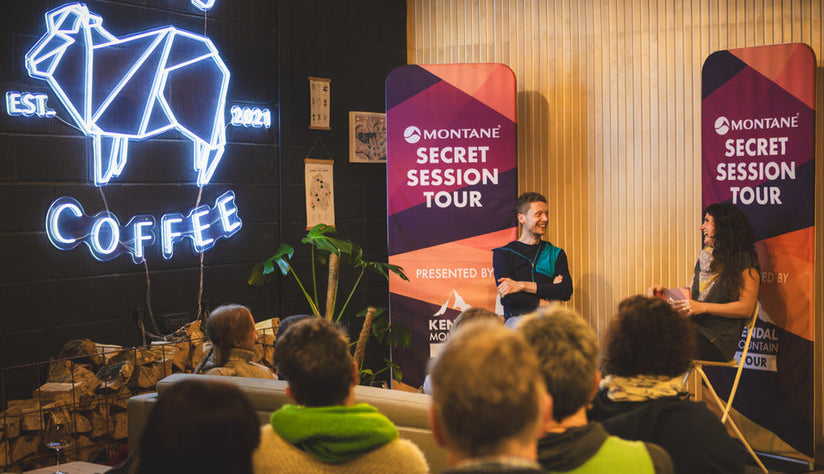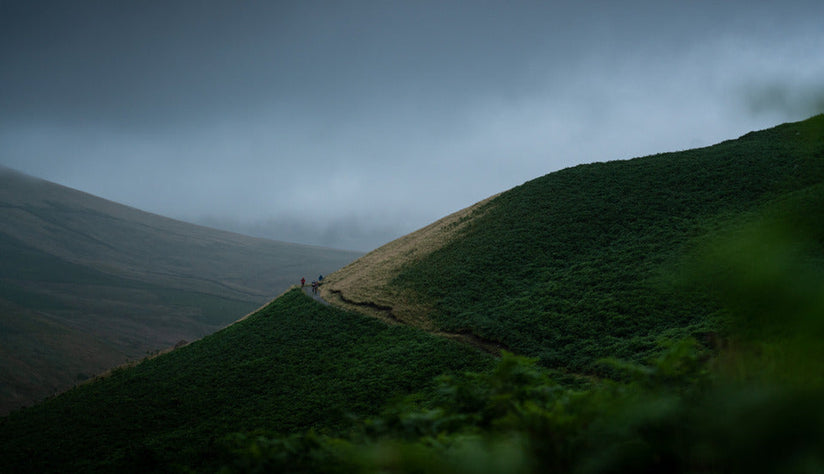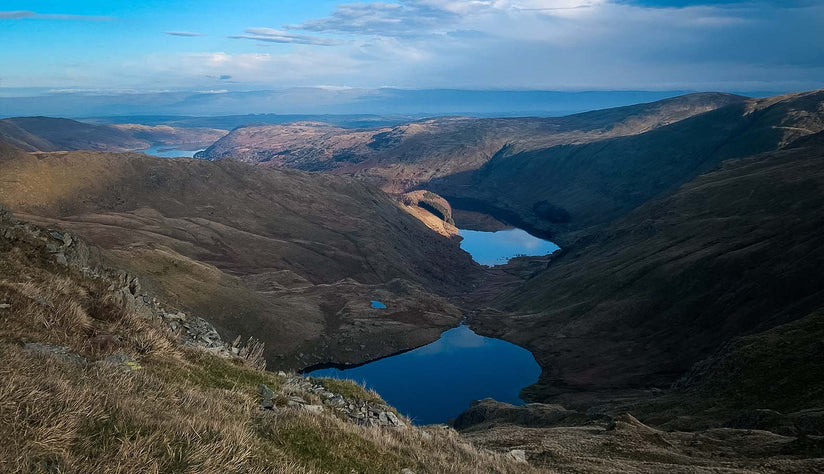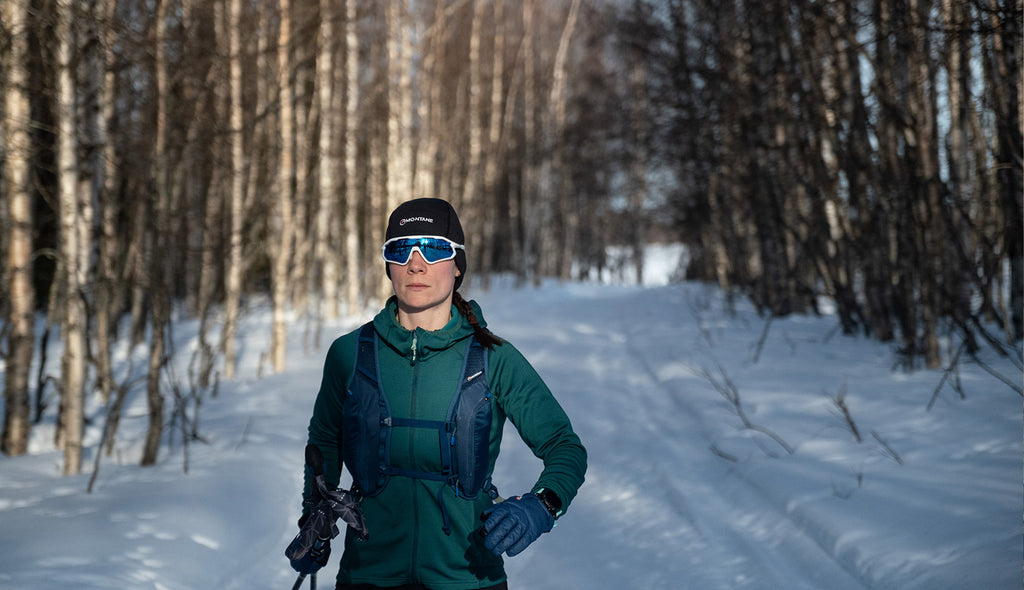Complete darkness surrounded me. Gentle snowflakes fell on my face and I could see my exhausted, icy breath in the light of my head torch. I started over 60 hours ago. Only 20km of cold, snowy trail stood between me and the finish line. All those doubts came flooding back. I stopped in my tracks, closed my eyes, and took a few slow, deep breaths to gain perspective. That was the moment I realised I could do it.
Having completed ultramarathons, endurance events, and arduous expeditions, I always thought I understood what resilience meant. It originates from the Latin word resilio, meaning ‘to bounce back’. At the end of 2020, I hit a massive setback. I was the fittest I had ever been, but one day on a military training course, my left knee disagreed. The ‘pop’ sounded like a gunshot in the distance. I had never experienced pain like it. But being told I required a major knee reconstruction and had at least a year of rehab ahead of me was worse. The next two weeks were an emotional rollercoaster. All I could think about was the fact that I couldn’t run, I couldn’t climb mountains, I couldn’t do burpees. I felt a loss of identity. But a level of authenticity in something that is rare to come by these days – a handwritten note – helped me off that path. The final sentence jumped out at me: ‘You are more than just what you do.’ Yes, I couldn’t run 100km, but I was still Katy and still had the same head on my shoulders. A head that needed to attack this injury with the same mindset as I would any other challenge. It was just a very different, unexpected challenge. Instead of focusing on what I couldn’t do, I focused on what I could do – and that was to concentrate all my energy into bouncing back.
Throughout the next year of rehab, I gained a new perspective on and respect for the meaning of resilience. It was finally time to start thinking about what was next. I wanted to prove to myself that this injury, and the fact that my left knee would never quite be the same, wasn’t going to hold me back or define what I did moving forward. I needed to find myself again. I love the idea of exploring my discomfort zone to expand my comfort zone. The Montane Lapland Arctic Ultra would be the perfect opportunity to tap into that unexplored zone – mentally and physically. I had 92 hours to complete 185 kilometres, pulling all my kit in my pulk to survive.

The night before race day, as I was trying to settle the butterflies in my stomach, we were treated to the aurora borealis. Bright green, pink, purple, and white dancing rivers filled the night sky as far as we could see. It was truly magical – Mother Nature wishing me good luck. But a wave of imposter syndrome hit me on the start line. A sea of Arctic Ultra veterans surrounded me, and so many questions raced through my head. Could I do this? Had I bounced back enough? Was I ready? My first Arctic Ultra was also my first ultra since surgery. Had I bitten off more than I could chew? I really was stepping into the unknown. When I doubt myself, my coping mechanism is to simplify it in my head rather than get drowned in the technical details of kit and conditions. In this instance, I was just going for a very long, very cold jog. All I had to do was keep putting one foot in front of the other and look after myself. That didn’t seem so scary.
As I set off with 185km of snow-covered trail ahead of me, nerves and excitement took over in equal measure. I felt like I was back where I belonged, testing my limits in an extraordinary landscape. As the kilometres passed and I became more comfortable dragging the pulk, I remembered why I enter endurance events like this. I was surrounded by endless sheets of white, dotted with patches of woodland and frozen lakes. There is nothing more humbling than being truly immersed in the wilderness. My pulk and I were such an insignificant dot in the vastness of the Arctic. All I could hear were my footsteps crunching in the snow, my breath battling the cold in my lungs, and the wind rustling through trees. I felt so isolated but so alive.
As night fell each day, I began to feel the weight of that insignificance. Sleep deprived, exhausted, and with no landscape markers to indicate how far I had come or still had to go, questions of doubt started to creep back in. And after 165km, on the third night, I hit my biggest wall. A few deep breaths and a quiet word with myself helped me see clearly. I needed to remind myself of my ‘why’: why did I enter this event? To test my knee but also my mindset – this was my own personal race, not against others. I was already way ahead of schedule, and my body was screaming out for me to rest for a few hours. My year of rehab meant I was finely in tune with my body, so I listened to it – something I may not have done previously. Now was not the time to let my ego win.

After 74 long, cold, incredible hours, I crossed the finish line with a mixture of emotions. I was relieved I could finally have a hot shower, and I also already missed the exhilarating feeling of being out on the trail. But most of all, I was proud. I had taken a massive risk entering the MLAU. I was apprehensive about how my knee would cope, worried that my resilience had fizzled, and didn’t know if I would be able to finish it. Quite honestly, I was terrified. But I have learnt to channel that fear into not allowing myself to quit. And I visualise how amazing it’s going to feel when I’ve accomplished my goal. There is no replica for that feeling.
On social media we are inundated by the amazing achievements of others. It can be difficult not to compare yourself and sometimes feel inferior. I always ask myself a series of questions. Why am I taking on this challenge? What is my purpose? What do I hope to gain from it? What does it mean to me? The answers are always personal. Some are ingrained deep within my heart. When I reflect on those questions, how can I possibly compare myself? Because no-one else on the planet will share the same answers. So instead of comparison, I seek inspiration and embrace the celebration of others. Adventure, challenge, and resilience are all relative words. They mean something different to each of us.
I feel so lucky and honoured to be able to share my story with others through talks and as a leadership and development coach. It’s never about ‘look what I’ve done’. It’s evoking the curiosity in others to think about how they can approach a goal that scares them with a different mindset. To delve deeper into their own personal ‘why’, to explore that discomfort zone, to discover what they are capable of – and to persist when it inev - itably gets tough.

Getting injured and doing rehab were indeed tough. However, one year and three months after my knee reconstruction, I finished the 185km race 4th overall, and 2nd female. I had won my own race. I had far exceeded my own expectations. As T.S. Eliot said: ‘Only those who risk going too far can possibly find out how far one can go.’ That event really taught me a different aspect of resilience: being able to bounce back and not let fear get in the way of progress. I was able to see my injury as an opportunity for growth rather than a failure. I’m not sure I would have entered if I weren’t looking for a comeback event. So, really, it opened an unexpected but extremely exciting door
Feeling inspired?
Katy’s story is taken from our Sidetracked Montane Special Edition Magazine - get your copy before they go and discover tons more stories from our global community!














